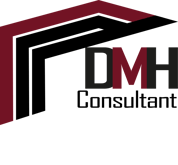Structural Stability Consideration In Steel Design
In structural engineering, the design of any structure must satisfy two essential performance criteria: strength and stiffness. These two factors directly contribute to the overall stability of the structure, which is crucial to ensure its safety and serviceability over its intended lifespan. While strength is typically given due attention during both design and construction stages, stiffness considerations are often overlooked. This can lead to excessive deflections, serviceability issues, or even failure due to instability under load.
CONSTRUCTIONCOMMUNITY
5/8/20241 min read


Fundamental Stability Issues
Structural stability encompasses several forms of potential failure, especially in steel construction. The most common stability-related concerns include:
Axial buckling – compression members such as columns losing stability under axial load.
Shear buckling – web or plate elements deforming under high shear stress.
Lateral-torsional buckling – beams twisting and bending simultaneously due to lateral loading.
Local buckling – localized failure in thin plate elements such as flanges or webs.
These issues are governed by both geometric and material properties, and are influenced by the member’s slenderness ratio, loading conditions, boundary supports, and cross-sectional characteristics.
The structural stability of steel buildings is highly dependent not only on individual elements such as beams, columns, and plates, but also on the stiffness and detailing of connections and framing systems. Improperly designed or fabricated connections can compromise the global stability of the structure, regardless of the adequacy of individual members.
To address these risks, design standards such as Eurocode 3 or BS 5950 provide specific guidelines, formulas, and safety factors to assist engineers in identifying and mitigating stability issues at both the element and system levels.
Beyond immediate loading conditions, long-term factors can gradually reduce a structure’s load-bearing capacity and stability. These include:
Fatigue – progressive deterioration caused by repeated or cyclic loading, often leading to crack initiation and growth.
Corrosion – material degradation over time due to environmental exposure, particularly in steel structures, which can reduce both cross-sectional area and stiffness.
The combination of these factors may not only affect structural safety but also complicate future repair or retrofitting works, especially when early signs of deterioration are not identified.
For further understanding of the topic, feel free to watch the following Youtube video playlist:
https://www.youtube.com/playlist?list=PLkaHdE-BxR5WLuYz6yK-61oieKdCheGX_
